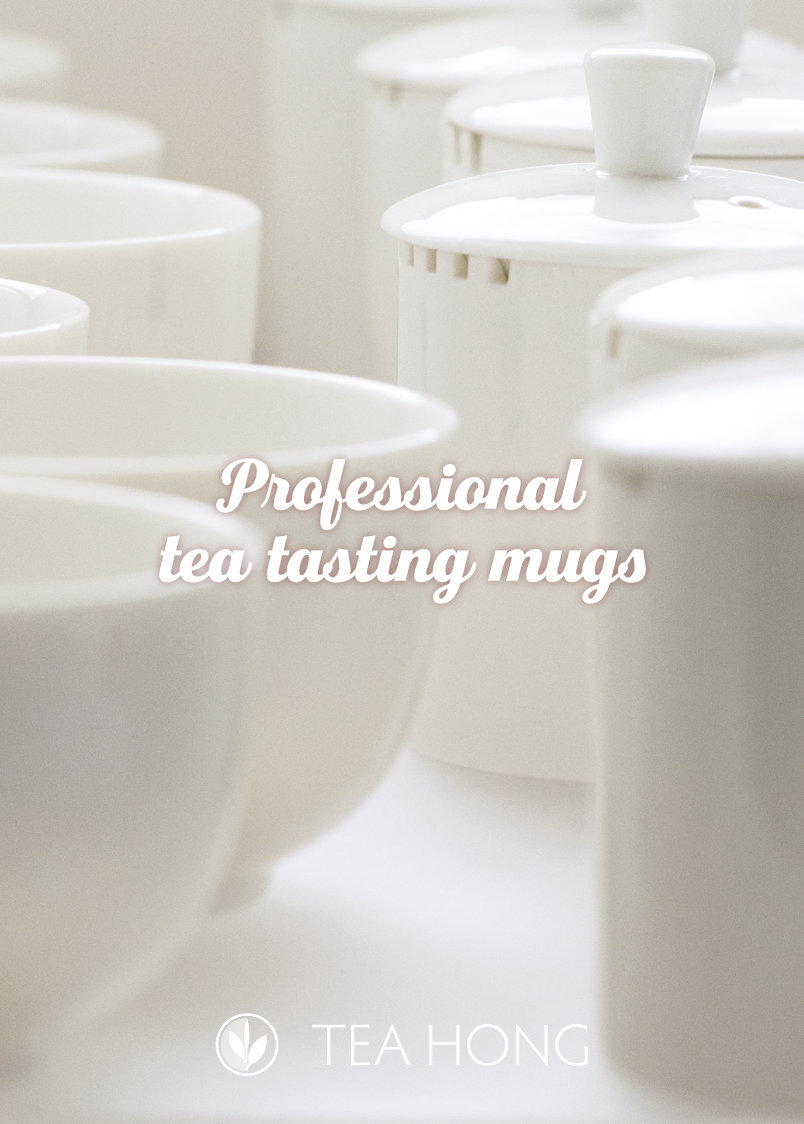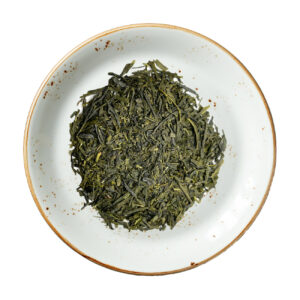Green Tea Production: Roasting

Green tea production processing by way of wok roasting using the hand is still a major practice in fine green tea production in China. This picture has been taken in Hangzhou, home to the finest Longjing green tea
There have not been any reliable recent audit yet but wok roasting (note) is definitely the most practiced approach in premium green tea production, employing the largest number of cultivars and there are always more coming up every year, delivering either better yield or better aroma, better tastes. Some makers always cling to those inherited from their ancestors, some always eager to try something new. Most do a combination of both.
green tea at its best
Plucking is done throughout the warmer months of the year but better harvests are those before mid April. The best is considered to be before end of March.
The harvest is thinly laid in bamboo sieves to briefly lose water in the shade, before they are “roasted”.

Fresh plucks are placed in the shade and turned for even withering every 15 to 20 minutes before being roasted.
In China, a 64 cm diameter iron wok is standard in the small farm and in all finer productions. It is heated on an encased wooden furnace with two individually controlled heating elements. A cotton pad dampened with a tasteless oil compound derived from tea seed and other plants is wiped very lightly across the wok such that the blackened metal surface is slightly glossy.
economy and perfection in the hand of the master
I shall describe the roasting of Longjing (formally Long’jing) hereforth; the concept is similar with the roasting of other teas but different in shape styling, heat progression and process phasing. Some can be very similar, like Ding’gu Dafang, or flat style Anji Baicha; yet others can be quite different, as you will read.
Some 200 grams of Longjing leaves, a little soften after withering, are loosely thrown into the wok. The master roaster shifts the leaves around and then presses the leaves against the wok, with his bare hand. Different people may speak differently as to why they have to use the hand to do the work, but basically they have to feel the gradual change of the leaves in order to apply the correspondent combination of shifting, pressure and heat to properly cook the harvest. Since the dampness, density and rigidity of each batch of fresh leaves is inevitably unique, the way it should be handled during frying has to be different accordingly.
irreplaceable hand-roasted quality
Roasting is the most crucial step in rendering the quality of a fine harvest. Much research has been done to try to replace the handicrafts with automation, only to have resulted in machines to make mass-market grade products. Better quality productions are still being hand-roasted, although good roasters are getting scarcer and those with master skills are mostly over 50. As the number of small gardens grows throughout the country, the spreading of this talent pool becomes even thinner.
The first round of roasting usually lasts for less than 20 minutes. The leaves, looking almost like the final product, are rested in wide bamboo baskets for “re-hydration”. A second round to thoroughly cook and dry the leaves requires much more physical vigour to press the leaves against a “cooler” wok, usually about 20°C lower than the first round, at about 60 to 70°C.
The process in other styles of wok-roasted tea are based on the same principle, but modified, some quite significantly.
diversity in form and gastronomy
Take Mengding Ganlu, a curly shape roasted tea, for example. There are three more rounds of interval resting while the total roasting time is spread over between the added steps. The delicate shape is achieved with a different set of even more intricate movements. Other curly shape wok-roasted teas, such as the famous Biluo Chun, Jingshan Cha, etc are produced similarly.
Yet another different shape style can be seen in the example of Anji Baicha. The original style is roasted extremely lightly till dry while inducing minimal shaping to the leaves, retaining the pluck’s natural flowery form, i.e. orchid shape. The same quality leaves do go through a flat-roasting process as that of Longjing for a different style product.
For less demanding roasting styles, such as that for needle styles, some producers have semi-automatic set ups for roasting, shaping, and drying using individual machines.
Wok-roasting for the curly and flattened styles has also been automated with large capacity machines. However, only mass market quality can be achieved. Finer quality selections are still possible only with the traditional hand roasted approach.












Of interests to me thanks ya
Hi! I’d like to translate this article to Spanish. Have I your permission to do it?
Thank U!
Hello Anabel, please go ahead and do it but don’t forget to post this credit line: original article in English at Tea Guardian and link it to https://teaguardian.mystagingwebsite.com/what-is-tea/green-tea-production-roasting.
Please also let us have a copy of the translation. We are trying to build a human made translation database so the site can be multi-lingual but not in those awkward auto translation languages.
Thank yoU 😉